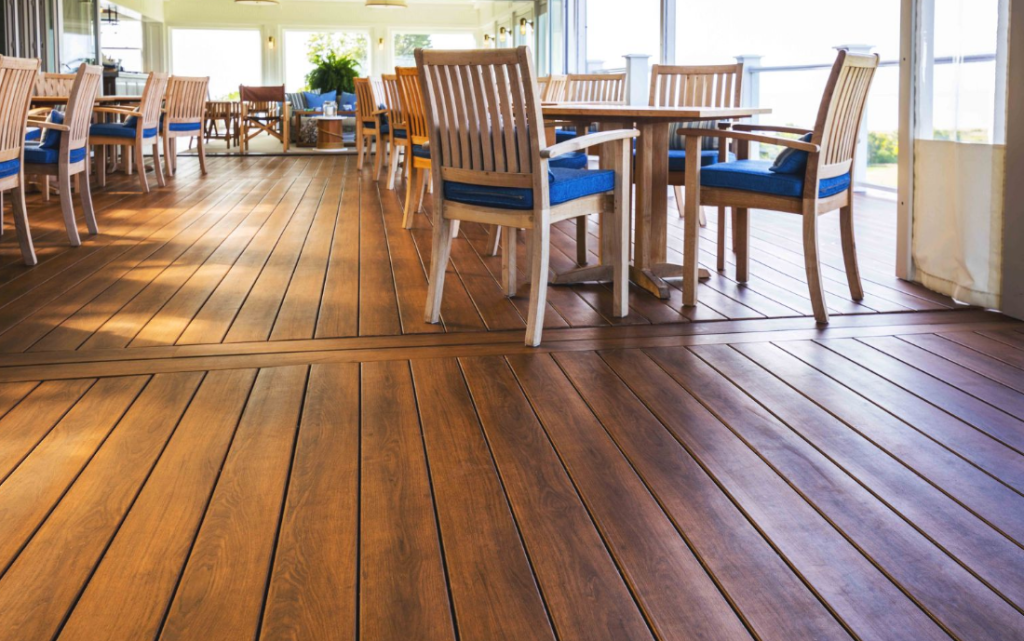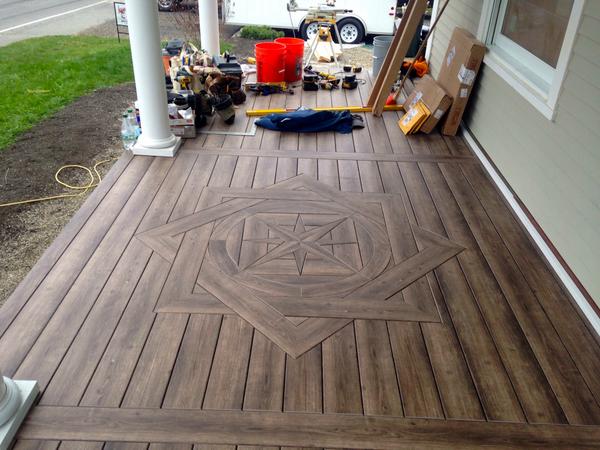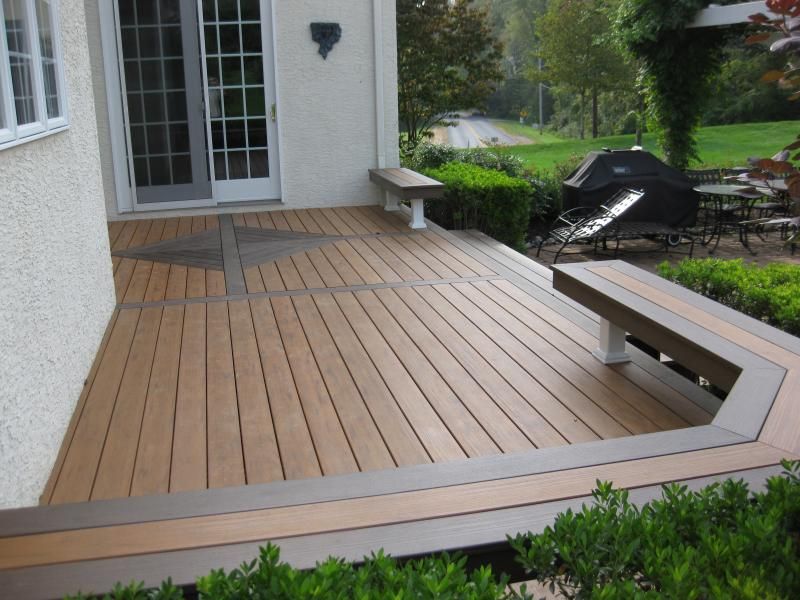Deck Building Basic
Heat-Treated Decking For Deck Building
Composite decking consisting of wood fibers and plastic is available in different designs. The trolley requires very little maintenance and read this article is dimensionally stable. Depending on the manufacturing method, it is relatively environmentally friendly. Waste wood is most often used as a raw material.

Composite trolley gives you a hassle-free balcony floor, but due to the plastic mixture, it does not give exactly the same barefoot feeling as real wood. Composite pallets do not turn gray in the same way as solid wood, but the original color may fade.
A terrace should be easy to lay and maintain. The choice of material depends on your taste and how it should fit with the house facade and the garden. Today there are many decks to choose from. On our inspiration page Build Trall , you will find information about different materials and their different benefits.
Our Trall Selector and the construction descriptions give you support and tips for success in your project.
1. Planning
The location of the balcony adjacent to the house is usually given. Where the patio is placed depends on a combination of several factors. The sun factor is important – predominantly morning sun, noon sun or evening sun. An alternative is two balconies in different directions.
Since the terrace is an extension of the house’s living space, you should keep in mind that the communication inside – outside works well. Wind protection and privacy protection are factors to also take into account. For the young family, a child-friendly terrace is a matter of course. Think from the beginning about how a possible future extension should be made. This can be an extension at an angle or a part under a roof.
A terrace on plinths above ground is built if, for example, the foundation of the house is high or if the ground is sloping.
In most cases, no building permit is needed to build a terrace without a roof. Some municipalities have a limit for how high a terrace can be without being required to have a building permit. The limit is often 600 mm. Therefore, check with your municipality what applies before you start building. Keep in mind, however, that if there are plans to later build walls and roofs, these are subject to a building permit if the roof is larger than 15 m2 and if you get closer to the plot boundary than 4.5 m.
All measurements are in mm where nothing else is stated
2. Material selection
Over time, this type of wooden structure is exposed to great stress in the form of temperature variations, humidity and load. Therefore, choose good quality materials that are adapted to the harsh outdoor climate
Select pressure impregnated wood in wood protection class NTR / A to:
wood in contact with ground
wood in constructions where personal safety requires that these are not weakened (for protection against accidents)
wood that is difficult to replace after installation in a humid environment (for example in shelves, on plinths and concrete slabs).
Select pressure impregnated wood in wood protection class NTR / AB to:

Read more in construction description Good to know about impregnated wood.
It is important that the dimensioning is large and that the joints are made strong. All fasteners and fittings of metal such as nails, screws, bolts and angle fittings must be properly rust-protected – use stainless steel alternatives before hot-dip galvanized. Read more in the construction description Screw and nail guide.
Surface treatment with, for example, alkyd oil paint or transparent wood preservative oil protects the surface of the wood and prevents small cracks from occurring. Be especially careful with surface treatment of end wood surfaces, which should be saturated with paint or penetrating base oil. Read more in construction description New painting of exterior wood.
3. Plinths
The balcony posts rest at the bottom against cast concrete plinths. In this case, we have used pole shoes, which are cast into the terminals. Alternatively, strong flat iron fittings can be used.
If the ground consists of gravel and stone, dig the plinth holes approximately 500 – 600 deep to a solid surface. All topsoil should be removed. Then the plinth is cast of concrete, whereby the fittings are cast according to the direction and uptake.
If the topsoil layer is thick or if the ground is muddy and frosty, the concrete plinths must be further down in the ground to reach a solid surface. First, a deep hole is dug and a small base slab is cast of concrete. Press a piece of rebar into the center. When this casting has hardened, a round mold of cardboard with a diameter of 150 is placed in the hole and the soil is filled back all around. Then the cardboard tube is filled with concrete and the fitting is cast

4. Construction
Support rule (carrying line) 1 , 6,000 long, fastened with a hexagonal wood screw or facade plug to the house foundation. The rule consists of two pieces, 45 x 45 and 45 x 195 in the lowest strength class C14, which are screwed together.
The front support bar 2 is screwed together by two pieces: 45 x 45 and 45 x 195 in the lowest strength class C14. Carefully balance the rule with a long spirit level, so that it is horizontal and at exactly the same height as the second support rule. Since the length in our example is 6,000, hidden length splicing can be done with support in the middle of the post.
The eleven floor joists 3 are of dimension 45 x 145 and in strength class C24 with a length of 2,400. The floor of the wooden deck is made of laths 28 x 95 – 120. Use spacers with a thickness of 5 when the laths are nailed or screwed on, and the gaps will be the same size.
